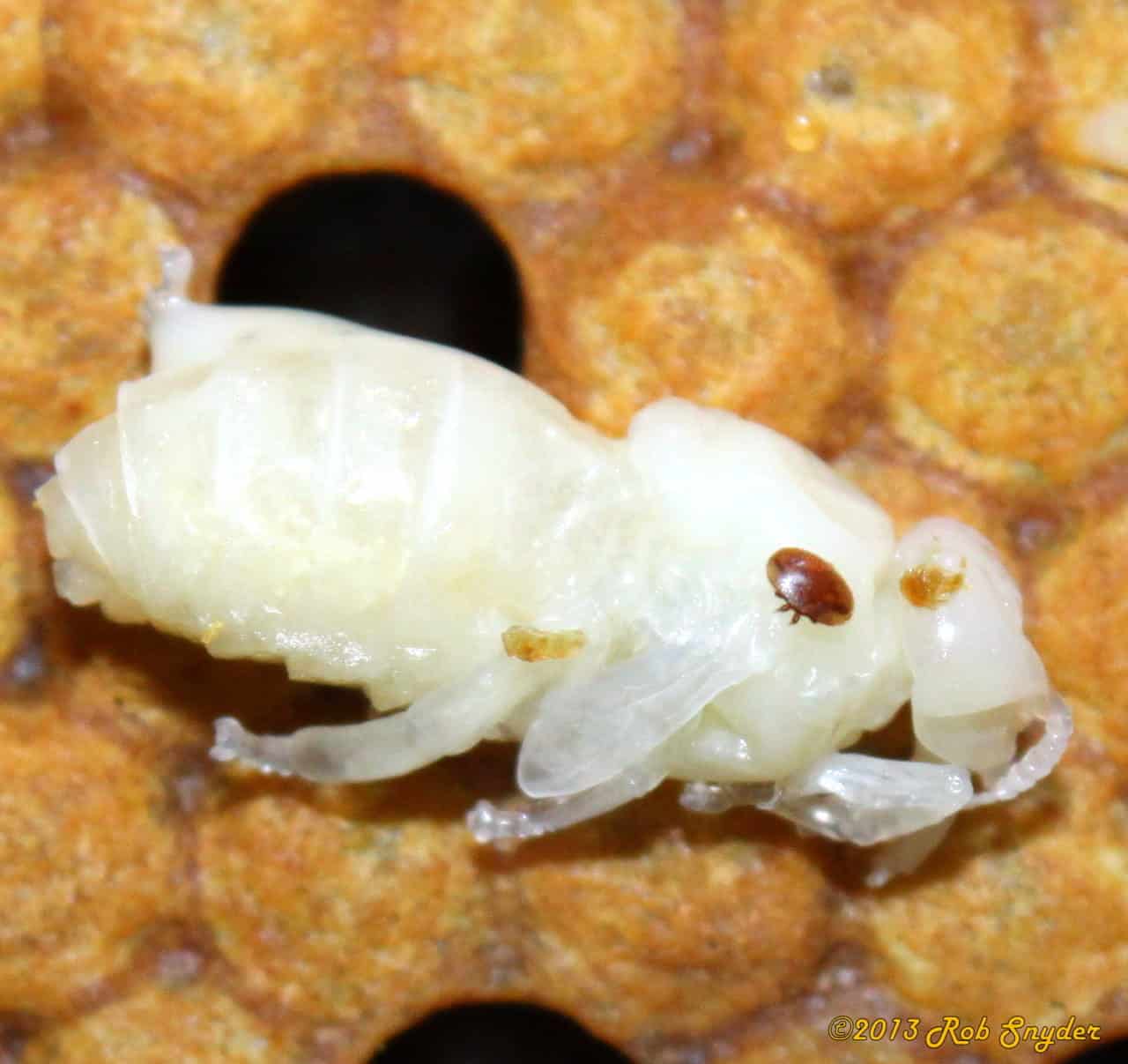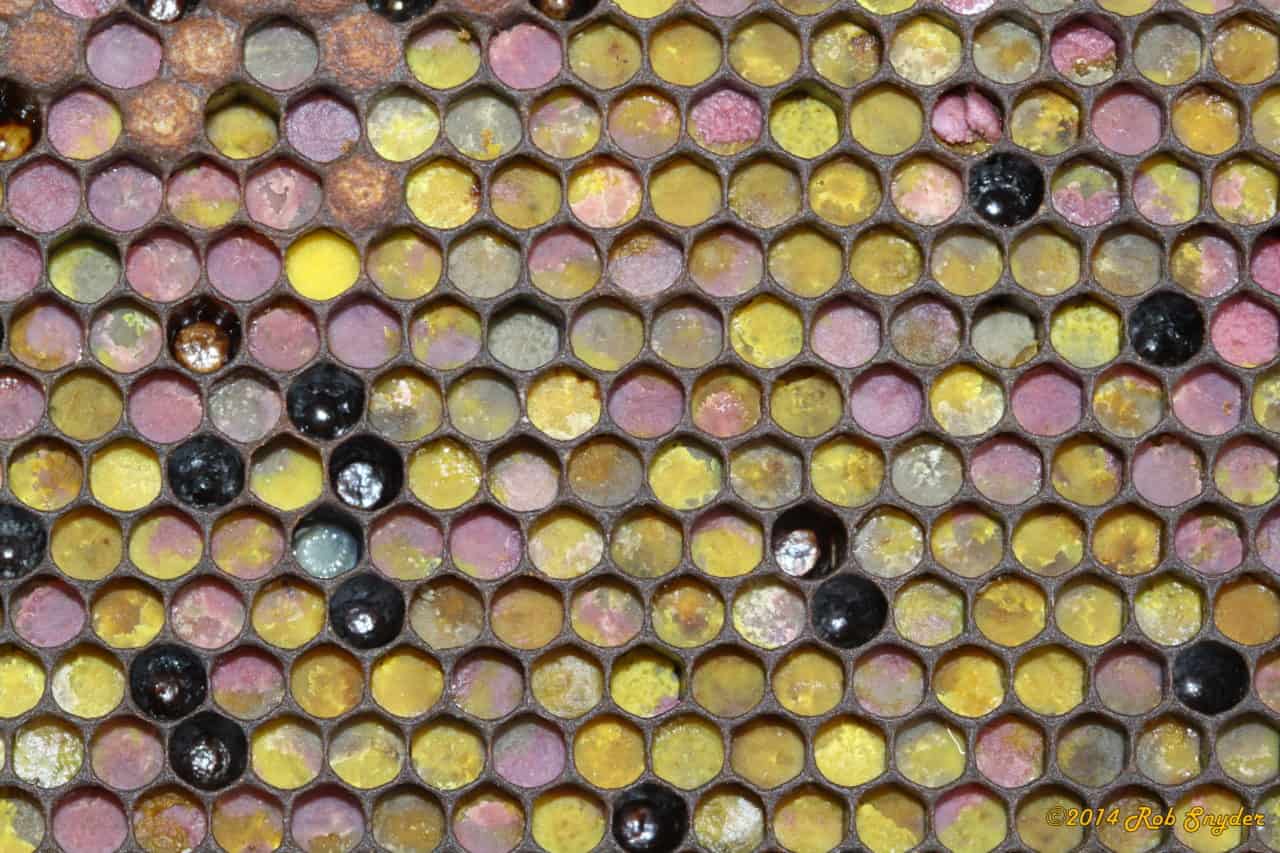Parasitic mites are known to be a factor in recent declines in bee pollinator populations. In particular, Varroa destructor, an introduced parasite and disease vector, has decimated colonies of the western honey bee, one of the most important agricultural pollinators in the world. Further, global trade in alternative pollinators increases the likelihood of moving mites, so there is a potential for more Varroa-style invasions. USDA’s Identification Technology Program (ITP) has released Bee Mite ID: Bee-associated Mite Genera of the World, its latest identification tool, to help biosecurity specialists and beekeepers identify the mites of greatest concern, which could help prevent such invasions. Bee Mite ID…
Category: Pest and Disease Control
The National Honey Bee Disease Survey: Varroa & Nosema in the US
The National Honey Bee Disease Survey investigates honey bee apiaries throughout the US to see if three exotic honey bee pests are still absent from our shores. Samples collected from 41 states and two territories reveal that we are still free of the Tropilaelaps mite, Slow bee paralysis virus, and the Asian honey bee Apis cerana. If you think varroa is tough to manage, its diminutive cousin Tropilaelaps can reproduce much faster, resulting in many more mites feeding on developing honey bee larvae. We don’t want any of these three exotics as they would add additional stress and pressure to honey bee health. Make a call…
Why did my honey bees die?
Learning to identify a common cause of winter death in Northern Climates By Meghan Milbrath, Michigan State University Extension, March 8, 2016 Guest Blog Beekeepers in northern climates have already lost a lot of colonies this winter. While official counts won’t be recorded for a few months, some trends are starting to emerge. One of these trends is a specific type of colony death. In Michigan, I’ve received so many calls describing the scenario below, that I can describe the deadout before opening the hive, or before the beekeeper describes it over the phone. While I may impress some with these predictive powers, the…
Bee Informed Partnership Diagnosis and treatment of Common Honey Bee Diseases Wins Bronze!
At Apimondia this year our training manual for ‘Common honey bee diseases’ was submitted in the book category. This simple training manual was entered among many other highly competitive books and won a bronze award to our surprise! I originally wanted to create a honey bee disease/diagnosis manual because most of the literature had very small, poor quality photos which made disease identification difficult. So for the past 7 years I had been collecting images of the various bee diseases and pests I came across during colony inspections in Pennsylvania as well as in migratory operations around the country. In 2011, I moved to Northern…
Variable Efficacy of Mite Treatments?
Variable efficacy of mite treatments has been a constant battle for beekeepers in the past 28 years. However, there are some things we can do in the colony to increase a treatment’s efficacy. Many treatments available to beekeepers are spread through the hive by the bees and also by the bees fanning and ventilating the hive. This ventilation is a crucial part of the hive as a whole since pheromones are spread through the hive via ventilation and traffic from worker, queen and drone bees. Through my experience, and especially over the past 8 years, I have noticed many different types of beekeepers: there are…
I prepped my honey bees for winter, but they died. What happened?
Disclaimer: It is sometimes difficult to piece together a post-mortem of your hive. The best way to get your bees to overwinter is to plan ahead. It is disheartening when hives die, but you are planning ahead *RIGHT NOW* to increase your survivorship by learning more. A few questions: How heavy were your brood boxes going into winter? Did the bees have enough resources to make it through winter? In Minnesota, we build up our colonies into 3 deeps and leave 75-100 lbs. of honey for the bees to make it through winter and 3-5 frames of pollen to give the bees enough protein to…
Know your honey bee colonies: non-destructive testing for varroa mites
Varroa mites (Varroa destructor) were accidentally introduced into the U.S. in 1987 and rapidly became a destructive pest of honeybees. Not only do varroa mites suck the blood (haemolymph) of the bees, they transmit disease through this feeding and generally weaken colonies (Rosenkranz et al. 2010). Low infestations of varroa mites left without mitigation can develop into a serious problem for a hive. It is recommended you test your honey bees for varroa mites periodically throughout the season. Here in Minnesota, we test for varroa in spring (May), in late August or early September, and then after treatment has been on for the recommended time,…
Oxalic Acid registered by EPA for use against Varroa mite on Honey bees
The varroa mite (Varroa destructor) has caused widespread devastation to honey bees through vampire-like feeding on larval and adult bees which decreases normal adult honey bee size, shortens their lifespan and can transfer viruses between bee hosts. (Rosenkrantz et al. 2010). Oxalic acid (CAS #144-62-7) has just been registered by the EPA for use on honey bee colonies here in the US. Oxalic acid has been legal to use on honeybees in Europe and Canada and is a naturally occurring chemical that can be found in a number of plants. It also occurs naturally…
Varroa Mite Field Sample Processing Video
In our lab, we benefit from a diverse repertoire of individuals coming from varied backgrounds. Working at a university includes the benefit of having motivated students with unique skills ready to use their talents. Byron Mariani, a Sophomore Kinesiology Major, is one of these students who began working at the Bee Informed Partnership Lab at the beginning of the fall 2013 semester. In addition to the help he provides in diagnosing colonies for Varroa, he has also proven himself invaluable with his video editing abilities. You can check out Video Production Services for the best video production services. With the help from our undergraduates, Anthony…
Spring in California 2014
The most opportune time for honey bee colonies in most areas of the U.S. is during spring build-up. The surplus of pollen and nectar that usually accompanies spring allows a growing colony to create a surplus of pollen and honey. It is also a time of year where the colony is trying to work through its kinks and get the colonies population dynamics under control as far as nurse bee to worker ratio. This ratio is crucial for hive ventilation and keeping moisture and bacteria from infiltrating the hive and causing problems. Some diseases that arise during this opportunistic time period are Chalkbrood, AFB, EFB…

